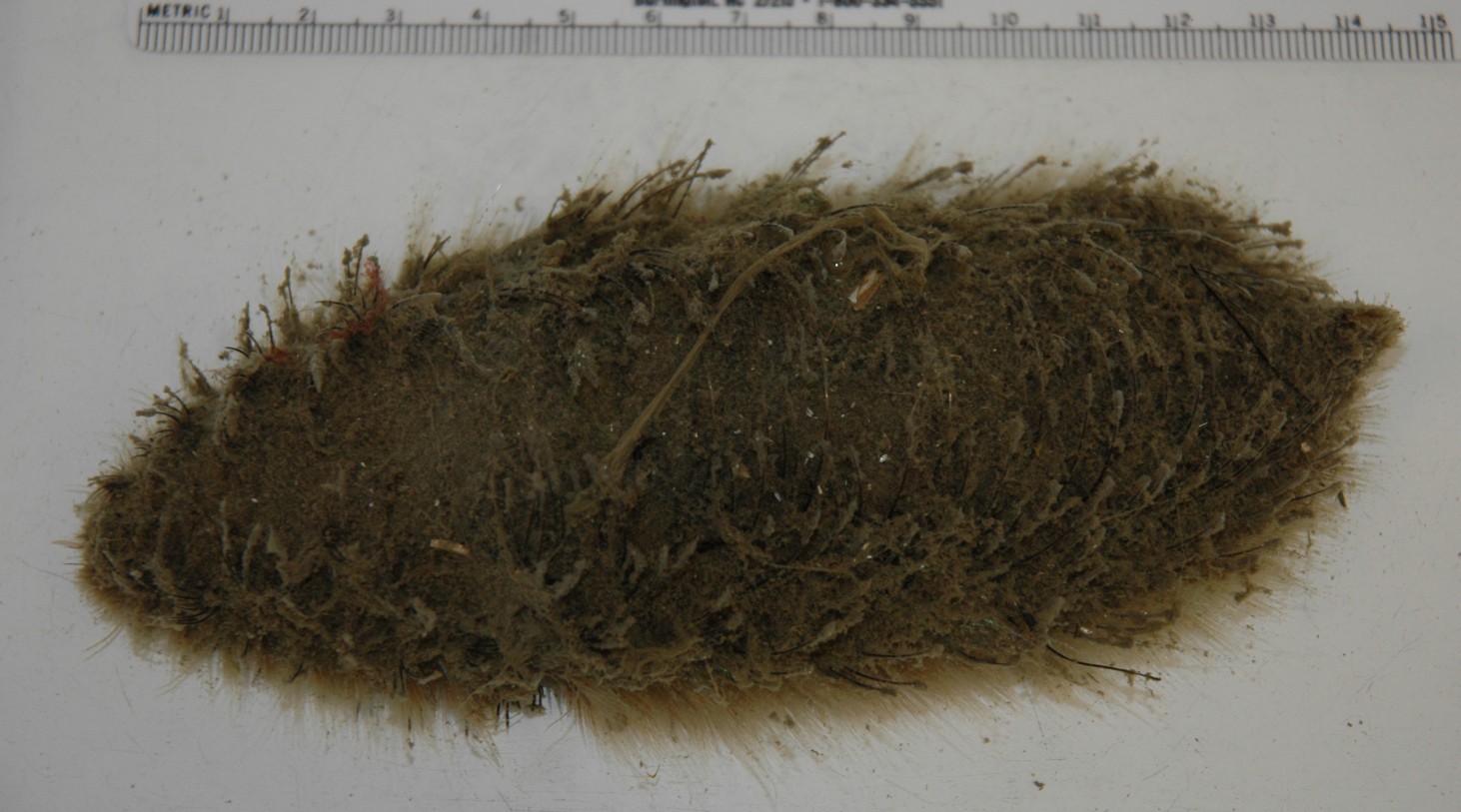How to Distinguish from Similar Species: Laetmonice pellucida has elytra not completely covered by notosetae. Aphrodita longipalpa has palps 8-11x as long as the prostomium. Aphrodita parva has a body of only about 27 segments. Aphrodita negligens has a club-shaped median antenna which is shorter than the prostomium. Aphrodita refulgida has smooth neurosetae and its ventralmost neurosetae are bright green and iridescent.
Geographical Range: Reports include records from British Columbia through coastal Washington and California to Costa Rica, and our marine station has several specimens collected in the area around Rosario and the San Juan Islands. Presumably they may also be found in Japan.
Depth Range: Subtidal to at least 90 m
Habitat: Buried in mud and sand.
Biology/Natural History: This is one of the few marine species (along with sea cucumbers) that appears to use anal respiration.
| Return to: | |||
| Main Page | Alphabetic Index | Systematic Index | Glossary |
References:
Dichotomous Keys:Flora and Fairbanks 1966
Kozloff 1987, 1996
General References:
Scientific
Articles:
Web sites:
General Notes and Observations: Locations, abundances, unusual behaviors:
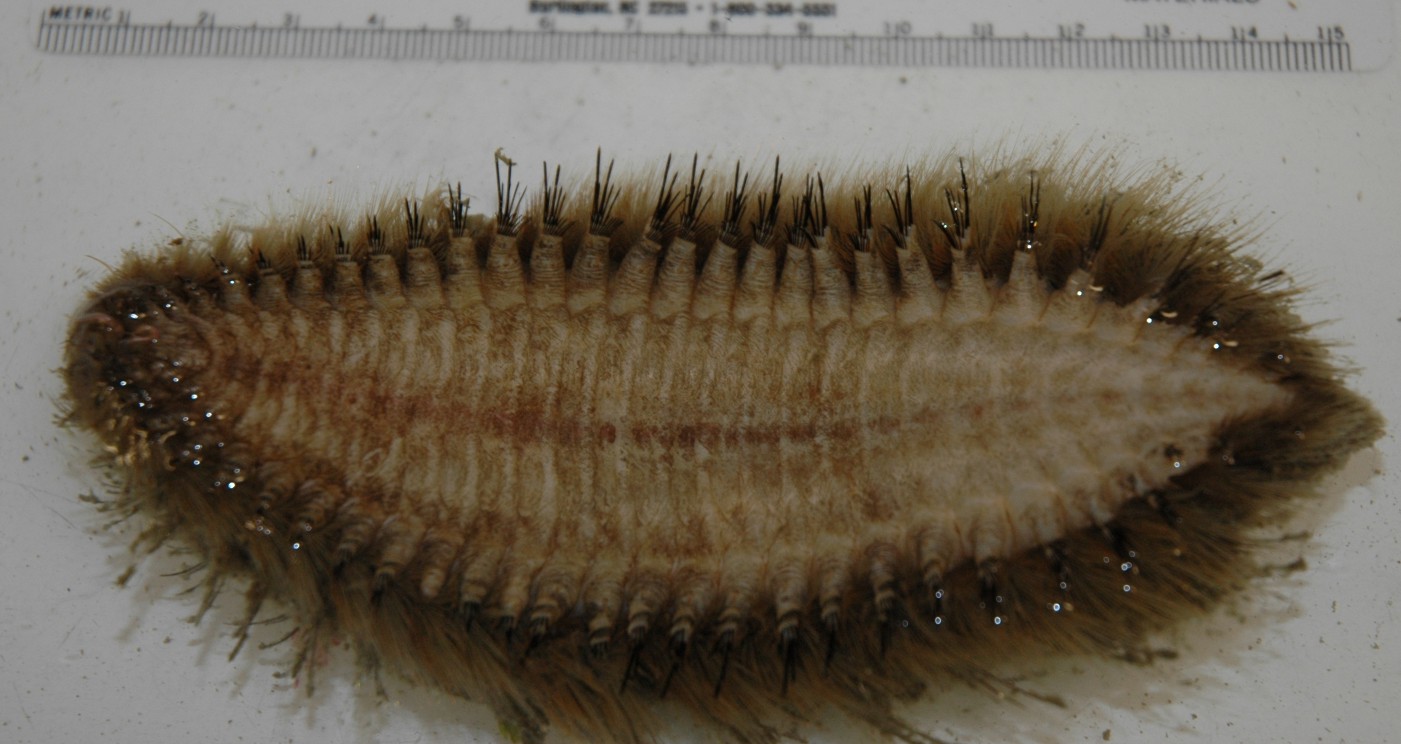
The segments visible on the underside show clearly that the
animal
is a polychaete. The head is to the left. Notice
also the thicker,
darker neurosetae
which contrast with the tangle of thinner, lighter notosetae.
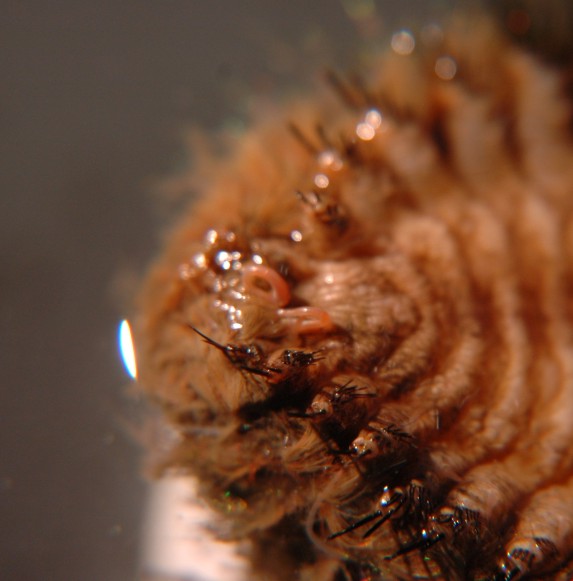
Here is a ventral
view of the head with the palps
showing. The prostomium
cannot be seen under the tangle of notosetae.
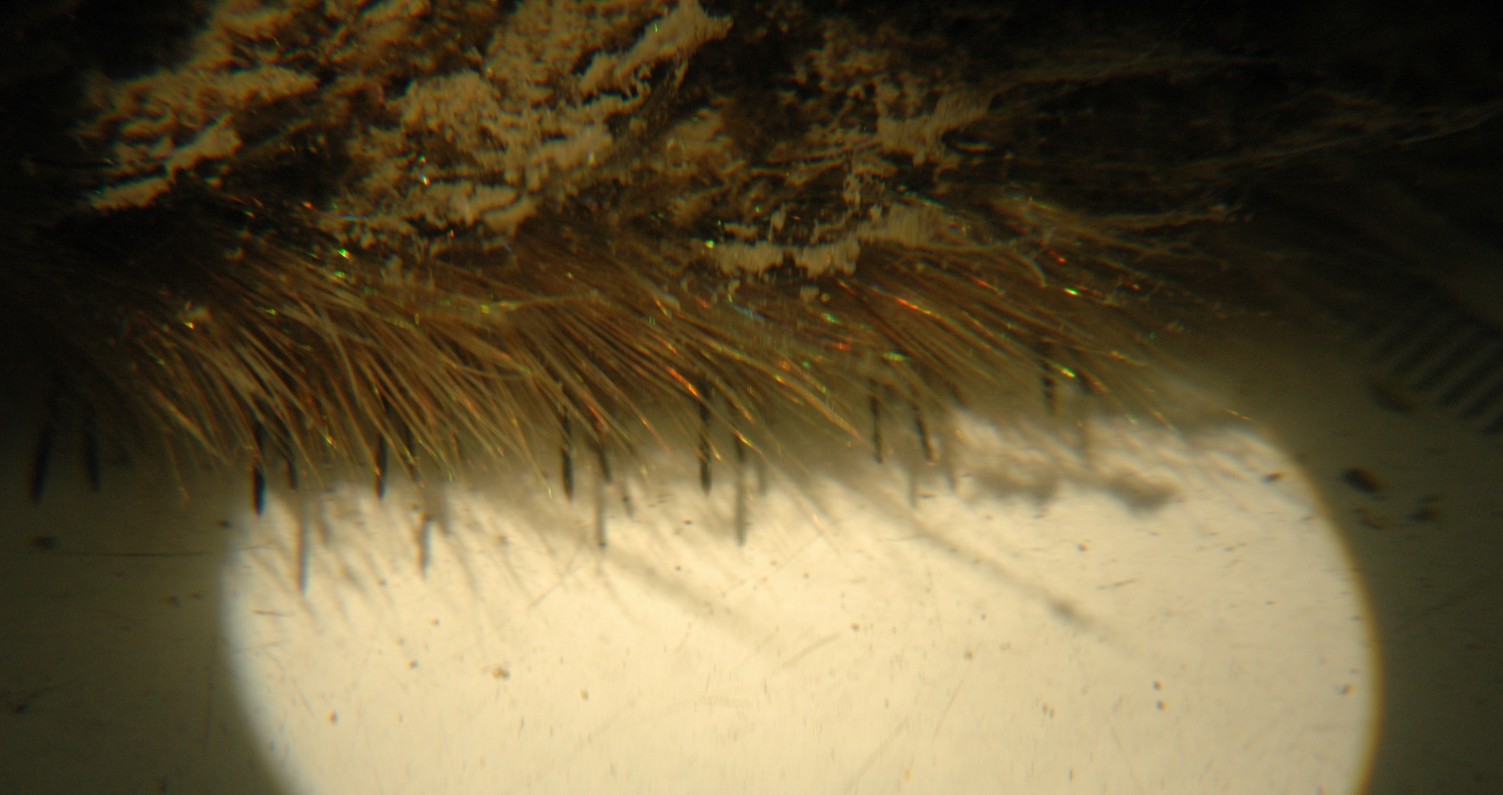 |
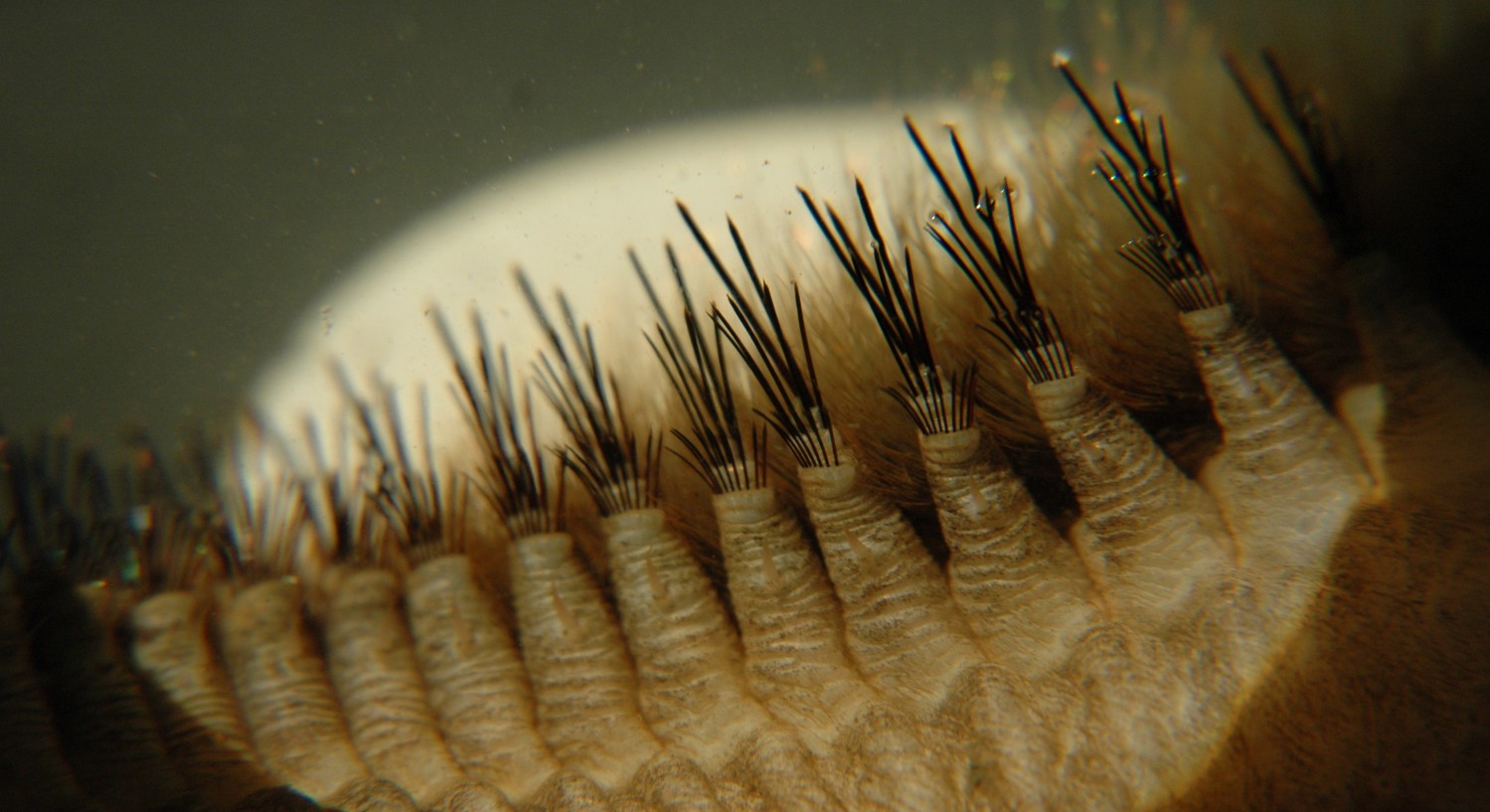 |
| Dorsal view of notosetae, with some neurosetae visible below. Notice the tangle of long, thin notosetae. The animal crawls through the mud, some of which adheres to the notosetae. A millimeter scale is visible to the right. | Ventral view of neurosetae, with some notosetae visible behind. Notice how much thicker and stiffer the neurosetae are than the notosetae, and also that the ventralmost neurosetae are a dark coppery color. |

Aphrodita
japonica appears to use some sort of anal
respiration.
Every 10-15 seconds a dorsal projection at the posterior end opens up
and
a stream of water spurts forcefully out. The projection is
nearly
1 cm tall and wide. The stream of water causes a visible jet
at the
water's surface at least 10 cm away. This photo shows the
animal
in mid-spurt.
Authors and Editors of Page:
Dave Cowles (2007): Created original page
Jonathan Cowles (2007): Updated page with CSS
